
Passive voice present and past Interactive worksheet
English Grammar Verbs Active and passive voice Active and passive voice Level: beginner Transitive verbs have both active and passive forms: Passive forms are made up of the verb be with a past participle: If we want to show the person or thing doing the action, we use by: She was attacked by a dangerous dog. The money was stolen by her husband.
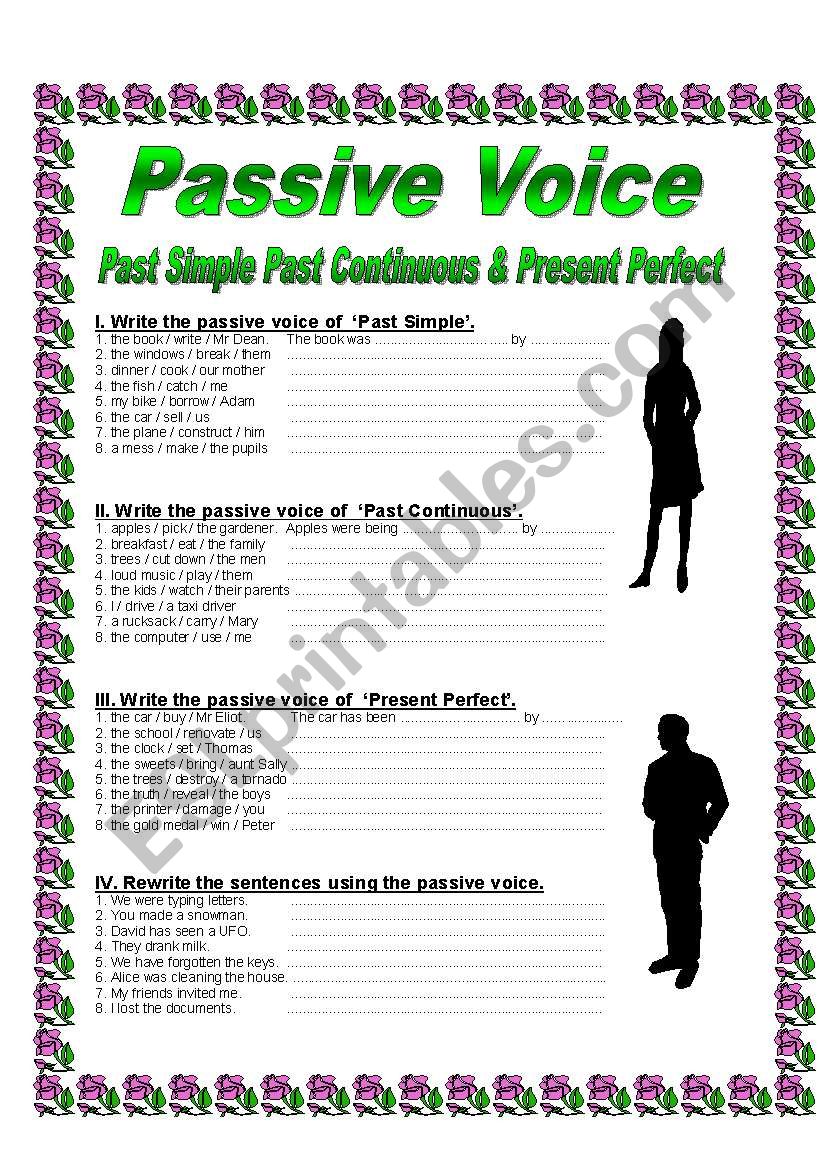
Passive Voice Present And Past Continuous Exercises Pdf BEST GAMES
Unit 10 - Exercise 1 - The passive (present and past simple) Complete the sentences with the present or past simple passive of the verb in brackets. Use contractions where possible.
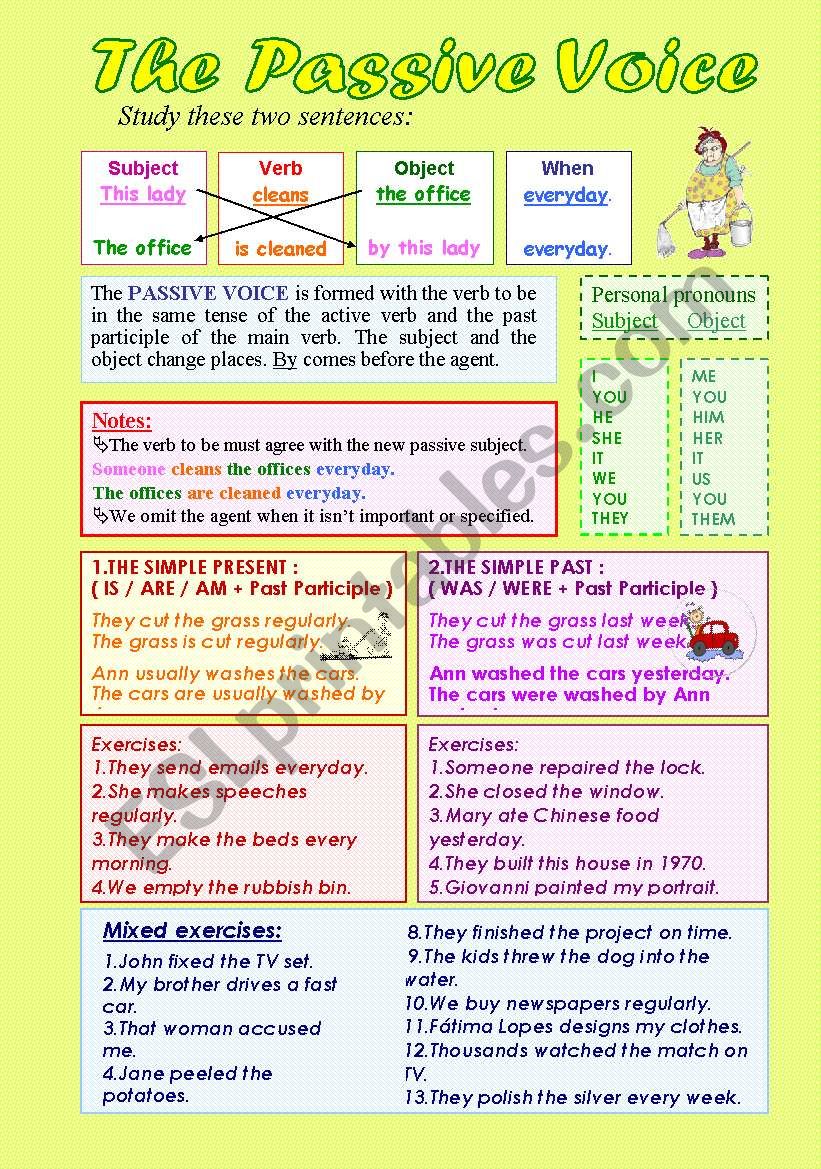
Passive voice (present and past simple) ESL worksheet by genita
Present and past passives. This unit was produced by BBC Learning English for you - and we hope you're learning a lot from our activities, videos and other materials. Passive forms like 'was.

Passive voice Present Simple Past Simple
Verbs with two objects Some verbs that have two objects can make two different active sentences, and so two different passive sentences too: Give Active: He gave me the book / He gave the book to me. You can choose either of the two objects to be the subject of the passive sentence.

Passive Voice Simple Present Tense Studyhelp
object . Using the passive voice is a way of writing sentences so that the subject has the action 'done' to it - the object of the sentence comes first. The passive voice can be useful for.
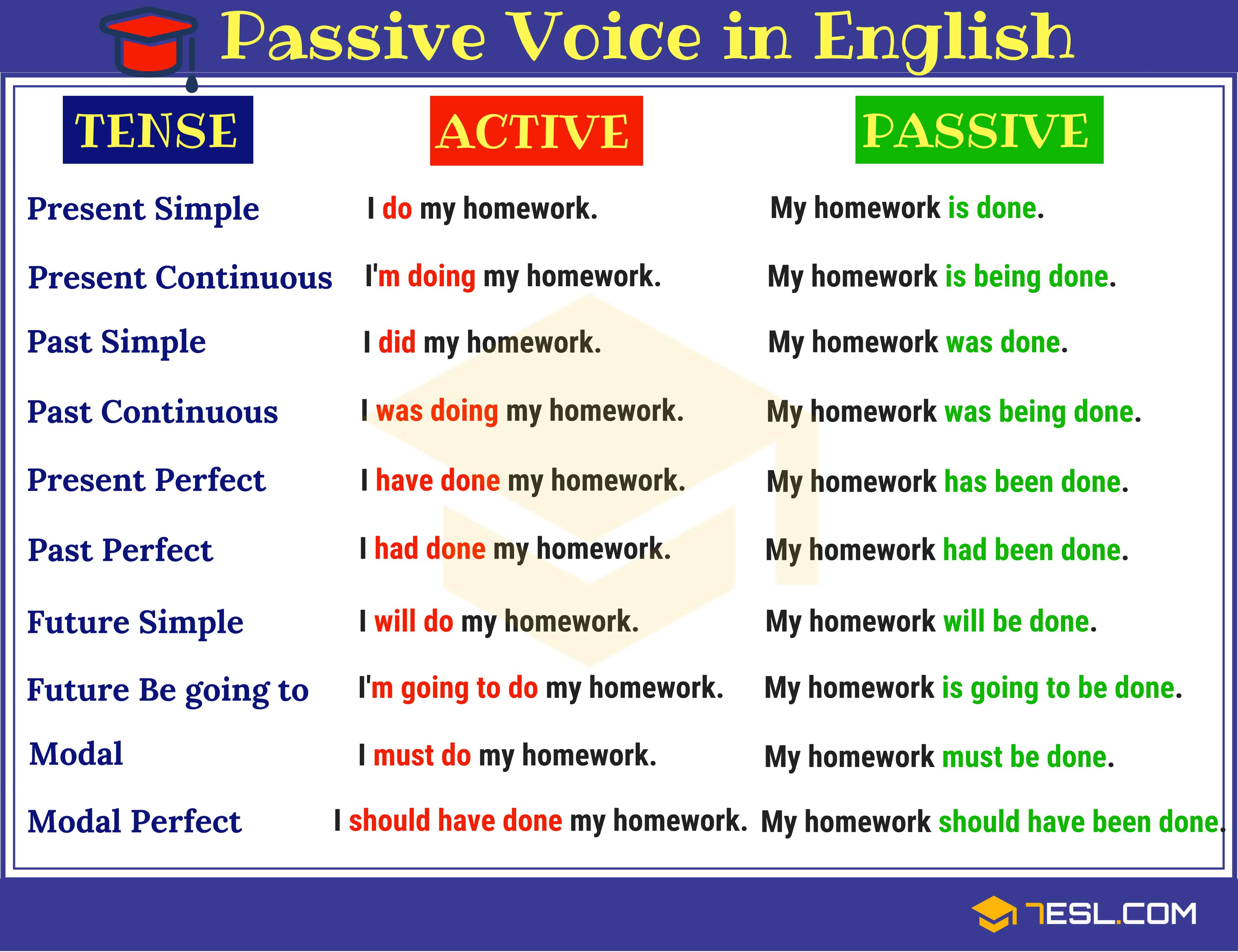
Passive Voice How to Use the Active and Passive Voice Properly • 7ESL
Passive voice - English Grammar Today - a reference to written and spoken English grammar and usage - Cambridge Dictionary

Passive Voice Hellip English Grammar Worksheets Teaching English
Improve grammar, word choice, and sentence structure in your writing. It's free! Check for run-on sentences, tone, clarity, and more with Grammarly.

Present simple and past simple passive voice Interactive worksheet
In the passive the main verb always has the past participle form. The verb to be changes to reflect the tense/verb form that is needed, for example the present perfect or the simple future: Honey.

Present, Past and Future Passive by Francisco Pérez on Genially
The passive voice is formed by a form of the verb TO BE + past participle of the main verb. The verb TO BE can be conjugated in various tenses. You can use a modal verb + be + past participle (for things in the present/future) - Ex) Something should be done about this problem.

Passive Voice Present Simple , Past Simple Exercises
We make the passive using the verb be + past participle. We start the sentence with the object. It is not always necessary to add who or what did the action. Only the form of be changes to make the tense. The past participle stays the same. Here are examples of the passive in its most common tenses. Do this exercise to test your grammar again.

Using the English Passive Voice with Different Tenses ESLBUZZ
Passive voice is a grammar structure that places the emphasis on the RECEIVER of the action (the verb) in the sentence. Let me show you the difference between active voice and passive voice: In the active voice, the subject of the sentence DOES the action: John painted the house last week. Subject / verb / object

English worksheets Passive Voice.. Present Perfect Tense
Richard Nordquist. Updated on October 11, 2019. In traditional grammar, the term passive voice refers to a type of sentence or clause in which the subject receives the action of the verb. (For example, the sentence "A good time was had by all" is constructed with a passive voice, in contrast with "Everyone had a good time," which is constructed.

Using the English Passive Voice with Different Tenses ESLBUZZ
When I came home, dinner (cook/not) yet. Rewrite the sentences in the passive voice. Use the same tense as in the active sentence. Only use by if necessary. They offer free trials twice a year. simple present|3 rd person plural: are + past participle|Do not include the agent when it is unknown/unimportant/obvious.
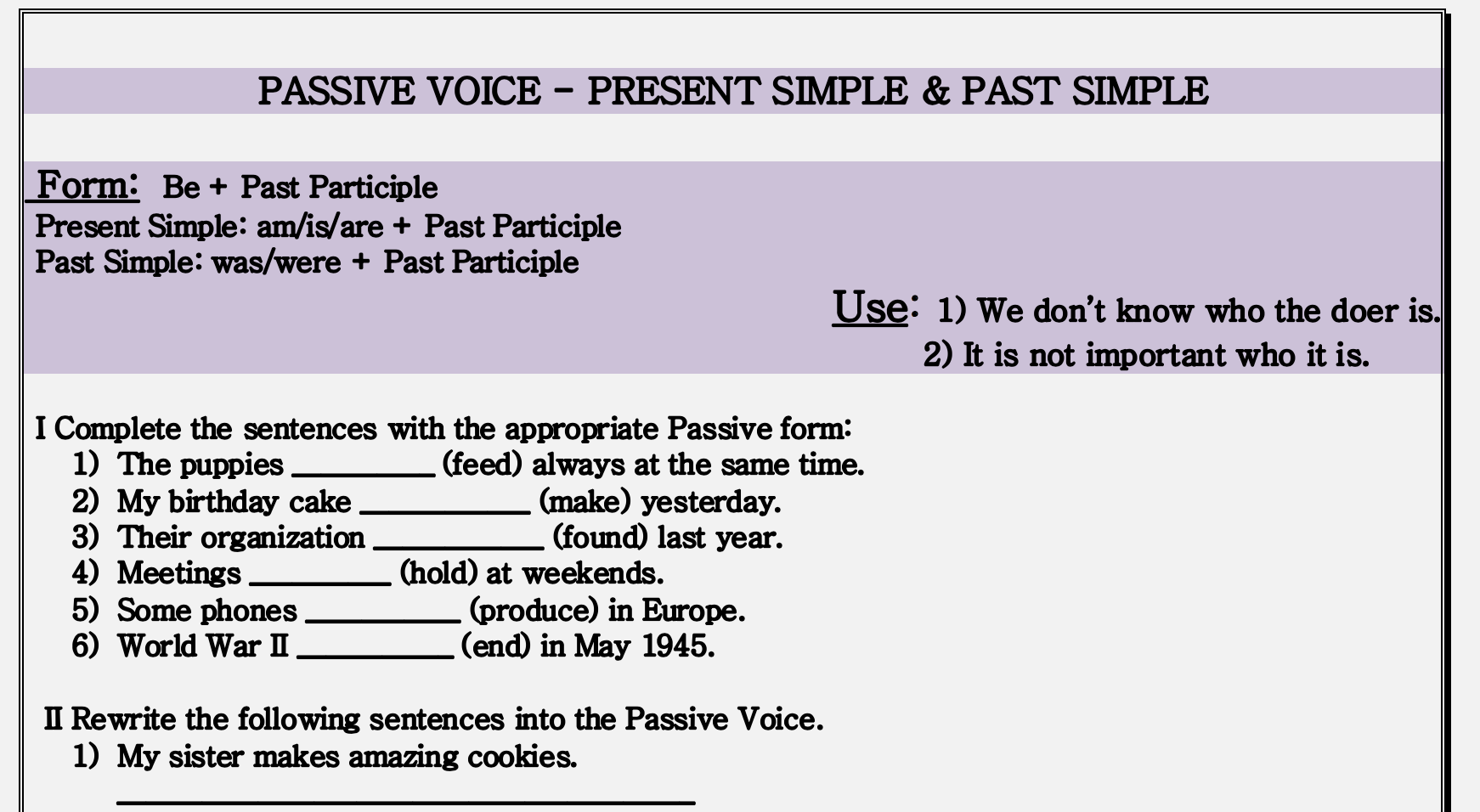
Passive Voice Present Simple & Past Simple Worksheet
The formula: [subject]+ [some form of the verb to be ]+ [past participle of a transitive verb]+ [optional prepositional phrase] The ball was kicked by Chester. That last little bit—"by Chester"—is a prepositional phrase that tells you who the performer of the action is.
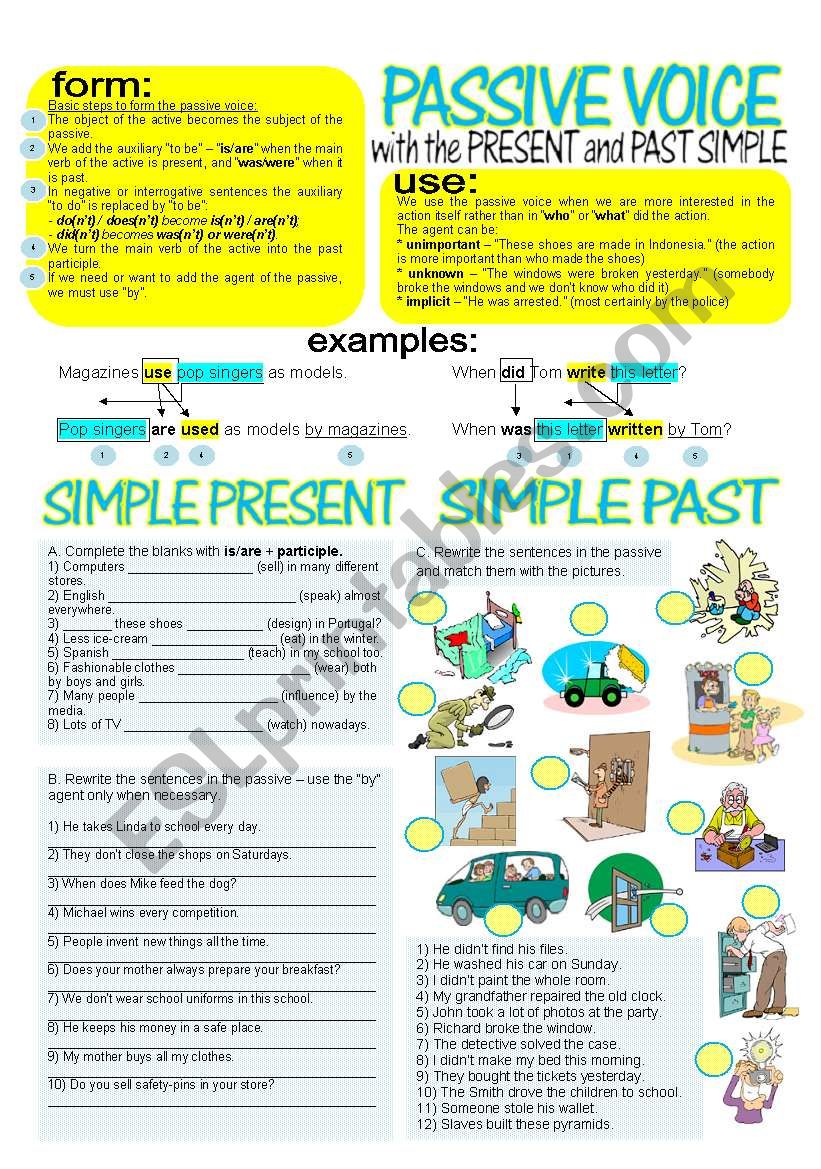
PASSIVE VOICE with PRESENT&PAST SIMPLE + key ESL worksheet by cagreis
The passive voice in English grammar allows us to make the recipient of the action the focus of the sentence; the person or thing performing the action is unknown, unimportant or obvious. The passive is formed as follows: form of be + past participle. Learn the difference between the active and passive voice with Lingolia, then put your.
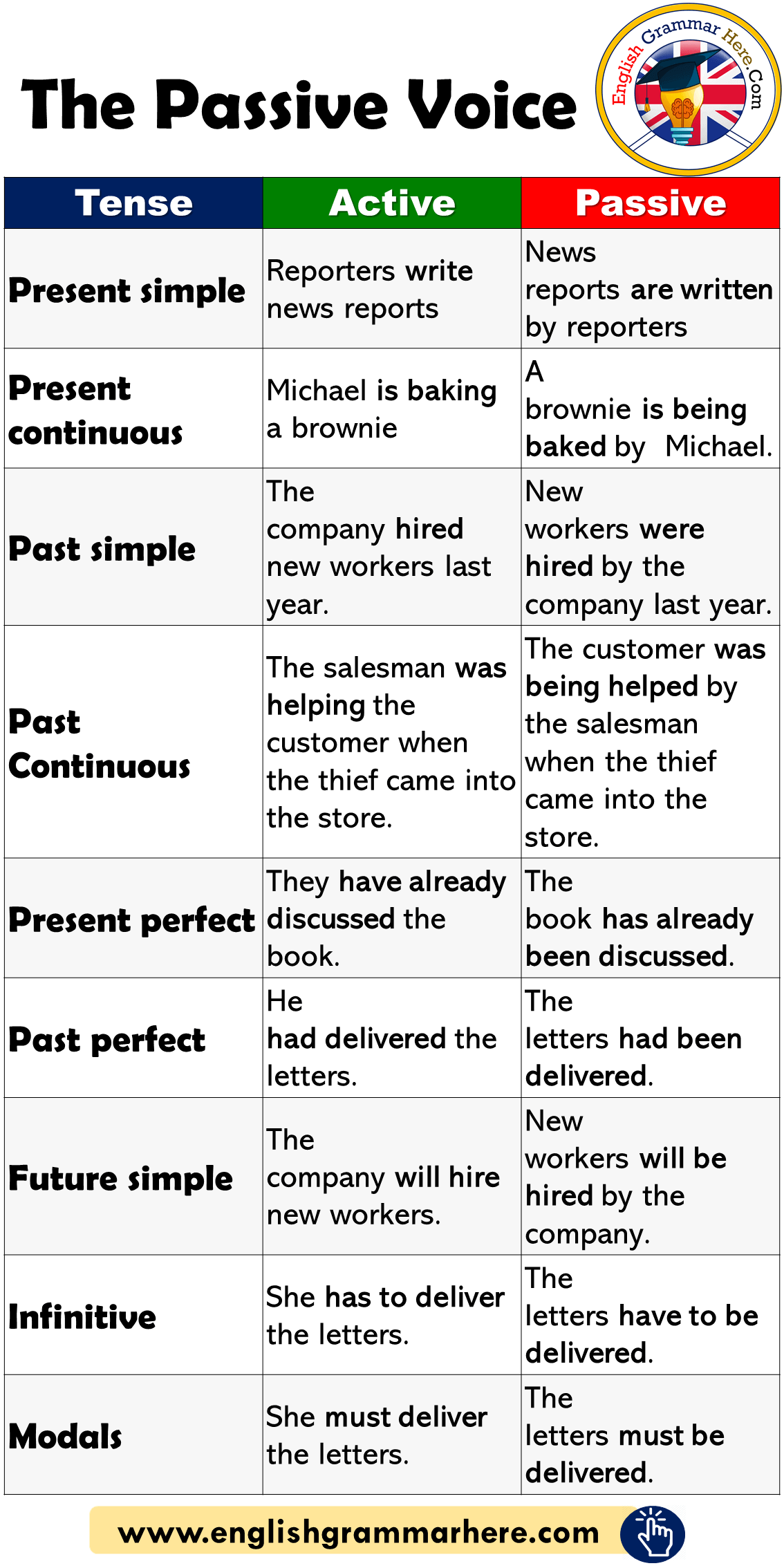
The Passive Voice and Example Sentences English Grammar Here
The passive voice is used when we want to emphasize the action (the verb) and the object of a sentence rather than subject. This means that the subject is either less important than the action itself or that we don't know who or what the subject is. My laptop was stolen. (The object - now the subject = My laptop / action= was stolen)